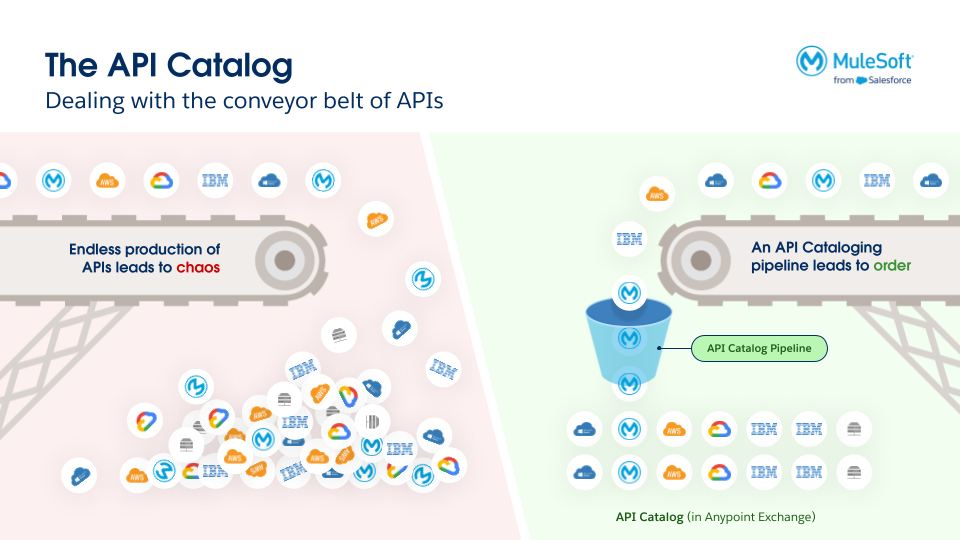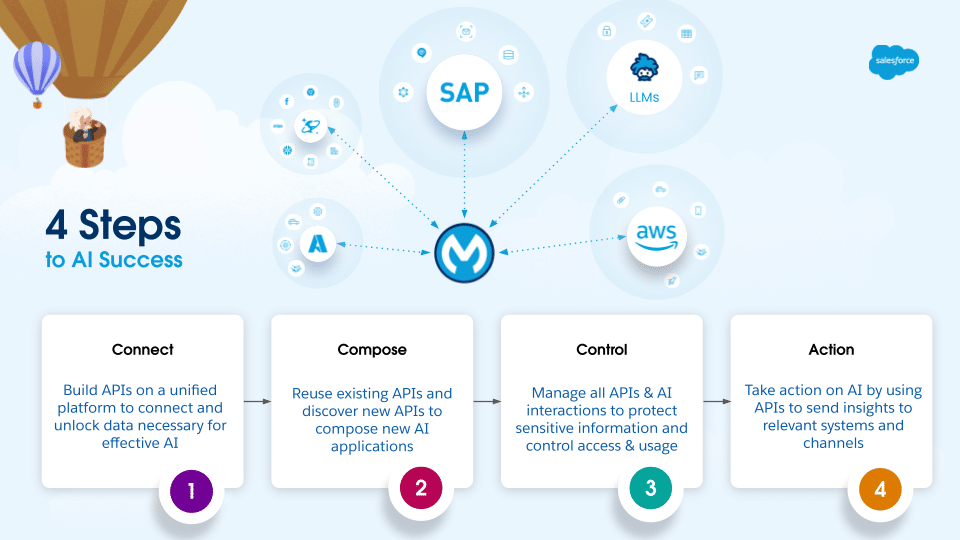AI is transforming how companies operate, but without governd access to backend systems, even the smartest models deliver limited value. Insights from the MuleSoft event in Ljubljana revealed how APIs form the bridge between AI ambition and enterprise reality.
AI Ambition Meets Enterprise Complexity
Most organisations want to tap into AI’s potential. Whether it’s automating customer interactions, optimising operations, or supporting decision-making, the promise is enormous. Yet most IT leaders face the same underlying problem: their systems are not ready.
Igor Babitsch, Senior Account Executive at MuleSoft, noted: “AI can summarise beautifully, but if you ask it to take an action like update an order, modify a customer record or issue a refund, it needs access to enterprise systems and that requires APIs.”
This simple observation exposes a deeper truth. AI needs structured, governed, and connected data to act. Without it, projects stall at the pilot stage, never reaching production or measurable impact.

The Reality of Data Silos
For many organisations, data lives in silos like CRM, ERP, legacy systems, data warehouses, and new SaaS apps. Each speaks a different language, uses its own logic, and stores information in isolated structures. Connecting them requires integration, and doing that well has always been one of the toughest challenges in IT.
MuleSoft experts have seen how this complexity multiplies as companies attempt to plug AI into the mix. If data sources are fragmented, AI models become unreliable or biased. If APIs are undocumented or inconsistent, automation cannot scale.
“We know that the world of AI is a world of data and APIs,” Andreas Postl, Lead Solution Engineer at Mulesoft, mentioned. “Models are great, but to make them useful, they must connect securely to enterprise data.”

Forbes reported that between 60% and 80% of AI projects fail, and those that do succeed typically occur in companies that view these projects not as application development projects, but as data-driven projects (learn more).
Book a free consultation and see how we can help you reach your goals.

From Chaos to Control: Building the Foundation
Before deploying AI agents, IT leaders must first address the basics of connectivity and control. This starts with API management and governance.
Large enterprises often have hundreds or even thousands of APIs, many of them duplicated or undocumented. An example came from a major bank in Europe, which discovered 1,800 APIs in its environment. Shockingly, 60% of them were unusable because they lacked documentation or had unclear field definitions. Developers were even duplicating “customer APIs” because they didn’t know existing ones existed.
The lesson was clear: if you don’t know what data you have or how it flows, AI initiatives will struggle. A centralised API catalogue, consistent governance policies, and well-defined access controls are essential prerequisites for trustworthy AI integration.

How APIs Enable Intelligent Automation
Once connectivity and governance are in place, APIs become the backbone for intelligent automation. They enable AI systems to move from observation to action.
For instance, an AI agent that analyses customer sentiment can only act on its insights if it can securely trigger an API in CRM or ERP to update records, create cases, or send follow-ups. APIs translate intelligence into execution.
This approach also supports composability. Teams can reuse existing APIs across new AI use cases, rather than starting from scratch, to reduce complexity and speed up delivery.

Preparing for an AI-Ready Architecture
You might be wondering what’s next. AI integration is evolving toward agent-to-agent communication, where systems interact autonomously through new open standards such as the Model Context Protocol (MCP). In this landscape, APIs remain the foundation that provides the rules, context, and security that make machine-to-machine collaboration possible.
Preparing for that future means:
- Investing in clean, well-documented APIs.
- Applying consistent governance and monitoring.
- Prioritising reusability and composable design.
- Keeping the architecture flexible enough to adopt new AI tools and models.
Closing Thoughts
It all comes down to this – AI depends on integration. The organisations that succeed will be those that treat APIs not as technical components but as strategic assets. They will see integration not as plumbing but as the foundation for intelligence.
The conversation that started in Ljubljana is only the beginning. For IT leaders, the message is simple: connect your data, control your APIs, and your AI strategy will have a solid foundation to stand on.
Contact us
"*" indicates required fields




